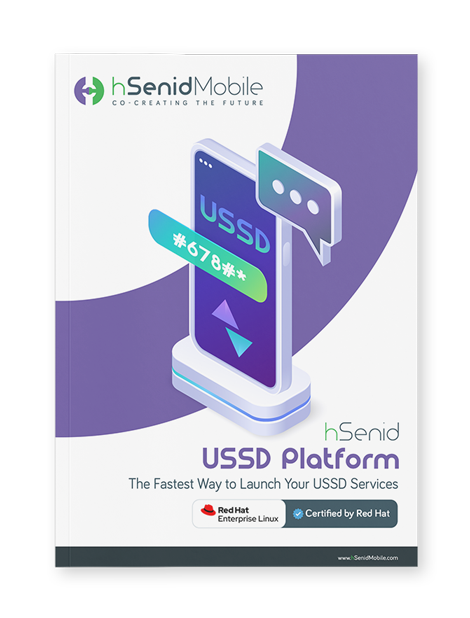In Africa, where digital divides and geographic barriers often challenge the
delivery of essential services, Unstructured Supplementary Service Data (USSD)
technology is emerging as a key player in making healthcare and education more
accessible and efficient. GSMA states that despite advances in mobile
technology, nine out of ten mobile money transactions in this region still
occur via USSD, underscoring its importance, particularly in settings where
internet access is limited or unavailable. This transformative impact is
particularly evident in remote and underserved communities, where USSD’s
simple, real-time communication capabilities are breaking down long-standing
barriers.
You may wonder just how pivotal USSD has become in advancing crucial sectors such as healthcare and education across Africa. Given its accessibility on even the most basic mobile phones, USSD is a game-changer in regions where advanced infrastructure is scarce, and connectivity remains a challenge. In this discussion, we will highlight three transformative effects of USSD on African healthcare and education, which will not only illustrate the impact of USSD but also demonstrate the integral role played by the hSenid USSD Gateway in driving these significant advancements.
The hSenid Gateway facilitates these interactions by enabling robust, real-time connections between patients and healthcare providers. It supports both user-initiated and network-initiated sessions, ensuring that vital health information is just a few keypad strokes away, irrespective of the user’s location or the type of mobile device they use. This inclusivity is crucial in Africa, where many still rely on basic mobile phones without internet connectivity.
USSD services, by contrast, offer a direct and real-time method to engage students. Schools and educational institutions that utilise USSD can overcome geographical and technological barriers by sending updates, conducting quizzes, and even delivering course content directly to students’ mobile phones. This capability is crucial in areas with limited access to computers or the internet, ensuring that education remains uninterrupted, even in remote or under-resourced settings. For example, during the COVID-19 pandemic, many African schools had to close physical classrooms and shift to remote learning. In such scenarios, regions without USSD services struggled significantly more to maintain educational continuity compared to areas where USSD was available to facilitate remote, interactive learning. This situation underscores the critical role that USSD plays in supporting education in Africa, demonstrating that in the absence of such technology, the educational divide could widen, leaving many students behind.
The flexibility of the hSenid’s Gateway shines here, where its dynamic menu capabilities allow educational content to be tailored and updated frequently based on the curriculum needs and feedback from users. Such flexibility ensures that students receive personalised and relevant educational material, catering to diverse learning needs and enhancing overall educational outcomes.
The hSenid Gateway supports this critical function through its advanced session management features. It handles the initiation, management, and termination of USSD sessions efficiently, ensuring data integrity and security. Moreover, its capability to integrate with existing databases and CRM systems allows for seamless synchronisation and updating of data across platforms, making it an invaluable tool for administrators.
You may wonder just how pivotal USSD has become in advancing crucial sectors such as healthcare and education across Africa. Given its accessibility on even the most basic mobile phones, USSD is a game-changer in regions where advanced infrastructure is scarce, and connectivity remains a challenge. In this discussion, we will highlight three transformative effects of USSD on African healthcare and education, which will not only illustrate the impact of USSD but also demonstrate the integral role played by the hSenid USSD Gateway in driving these significant advancements.
Broadening Healthcare Access
One of the most compelling advantages of USSD technology is its ability to broaden access to healthcare services across Africa. In regions where traditional healthcare infrastructure is lacking or where medical professionals are scarce, USSD provides a lifeline. For instance, patients in rural areas can use USSD services to schedule appointments, receive medication reminders, and access medical advice without travelling long distances.The hSenid Gateway facilitates these interactions by enabling robust, real-time connections between patients and healthcare providers. It supports both user-initiated and network-initiated sessions, ensuring that vital health information is just a few keypad strokes away, irrespective of the user’s location or the type of mobile device they use. This inclusivity is crucial in Africa, where many still rely on basic mobile phones without internet connectivity.
Enhancing Educational Engagement
In the educational sector, USSD services are turning the tide by facilitating interactive learning and information dissemination. Schools and educational institutions utilise USSD platforms to send updates to students and parents, conduct quizzes, and even deliver course content. This method proves especially effective in areas with limited access to online resources. Without USSD services, students and educators in these areas face significant barriers. For instance, in regions without USSD, disseminating information quickly and effectively to students can be cumbersome, as alternatives like online learning platforms or email communications are often not viable due to connectivity issues.USSD services, by contrast, offer a direct and real-time method to engage students. Schools and educational institutions that utilise USSD can overcome geographical and technological barriers by sending updates, conducting quizzes, and even delivering course content directly to students’ mobile phones. This capability is crucial in areas with limited access to computers or the internet, ensuring that education remains uninterrupted, even in remote or under-resourced settings. For example, during the COVID-19 pandemic, many African schools had to close physical classrooms and shift to remote learning. In such scenarios, regions without USSD services struggled significantly more to maintain educational continuity compared to areas where USSD was available to facilitate remote, interactive learning. This situation underscores the critical role that USSD plays in supporting education in Africa, demonstrating that in the absence of such technology, the educational divide could widen, leaving many students behind.
The flexibility of the hSenid’s Gateway shines here, where its dynamic menu capabilities allow educational content to be tailored and updated frequently based on the curriculum needs and feedback from users. Such flexibility ensures that students receive personalised and relevant educational material, catering to diverse learning needs and enhancing overall educational outcomes.
Streamlining Data Management
Effective data management is pivotal for both healthcare and educational institutions to make informed decisions and improve service delivery. USSD technology offers a straightforward way to collect and manage data from widespread populations quickly and cost-effectively. For instance, healthcare facilities can track disease outbreaks, while educational authorities can monitor school attendance and performance metrics.The hSenid Gateway supports this critical function through its advanced session management features. It handles the initiation, management, and termination of USSD sessions efficiently, ensuring data integrity and security. Moreover, its capability to integrate with existing databases and CRM systems allows for seamless synchronisation and updating of data across platforms, making it an invaluable tool for administrators.

In Conclusion
The impact of USSD technology on healthcare and education in Africa is profound and growing. By providing essential services accessible via simple USSD codes, it bridges the gap between advanced technological infrastructure and basic service delivery needs. The hSenid USSD Gateway stands at the forefront of this innovation, offering a versatile, robust, and user-friendly platform that enhances service delivery and accessibility. For more information on how this gateway can transform service delivery in your sector, visit our website. Join us in revolutionising access to healthcare and education across Africa, making a lasting impact where it matters most.hSenid USSD Gateway: Powering the Revolution
At the heart of these transformative initiatives lies the hSenid USSD Gateway. This cutting-edge platform not only facilitates seamless communication but also provides essential tools for data management, analysis, and scalability. Whether it’s coordinating healthcare logistics or monitoring educational progress, this gateway is the backbone of these innovative solutions.In conclusion, USSD isn’t just alive and kicking; it’s thriving in contexts where other technologies falter. By harnessing its potential in healthcare and education, we’re not only bridging digital divides but also building a more inclusive and equitable future for all Africans.








